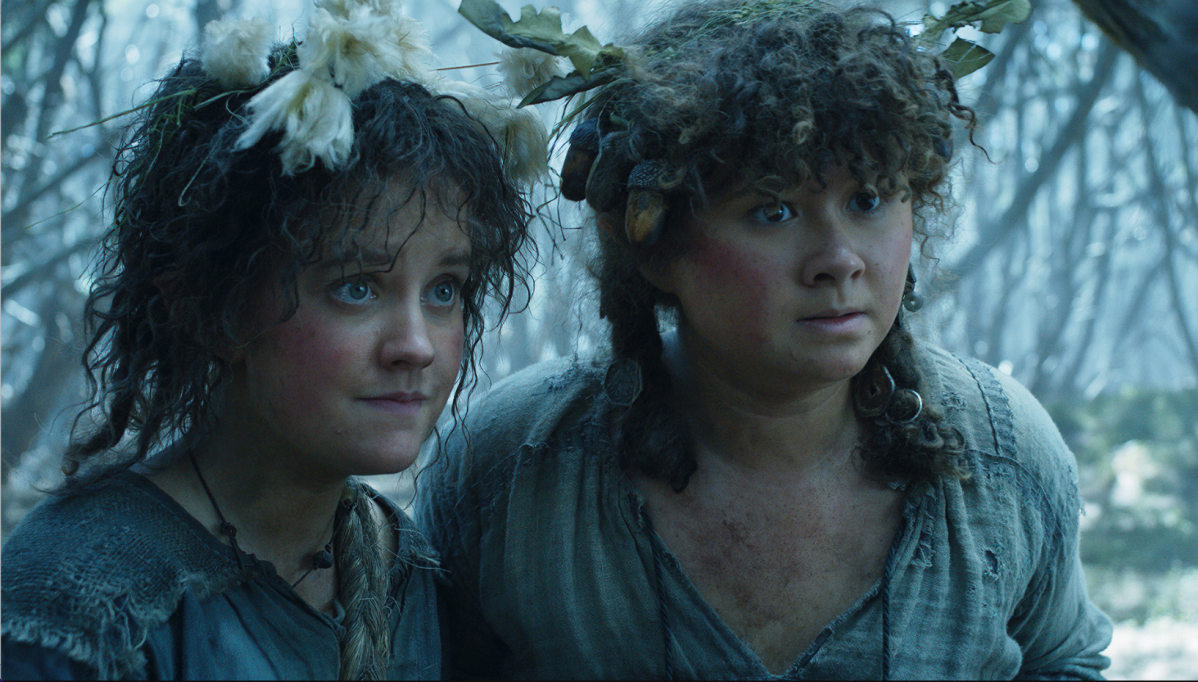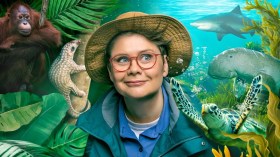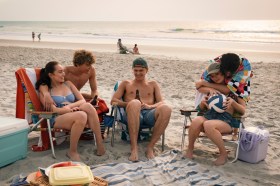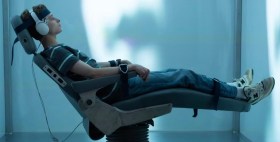Despite all the evidence to the contrary, the two biggest series currently streaming are not the same show.
Yes, Rings of Power and House of the Dragon are both epic fantasy series that cost tens of millions of dollars an episode, filled with striking costumes and fantastical creatures and complicated plots and stunning settings. But they’re not the same show: for starters, only one has four words in its title.
Read: House of the Dragon – a fiery new game is afoot
Okay, they’re very different series once you look closer. Rings of Power is a traditional fantasy series, a story of good versus evil with elves and dwarves and proto-hobbits battling an inhuman evil (that seems to be taking its time in showing up). As I wrote in my ScreenHub review:
The whole point of these kind of projects is to create and then show off a fantasy world that the audience is encouraged to imagine themselves in.
The characters are specks in the foreground, there as much to suggest scale as to provide drama. It’s a world of good versus evil, with obvious and repeated echoes with the original Lord of the Rings.
House of the Dragon is more about dynastic power and the grubby reality of medieval politics (gender and otherwise), only with dragons.
Read: The Rings of Power – nice cake, OK icing
But to the casual observer – which is most people who watch streaming, and television in general – they’re two sides of the same coin.
They’re hardly the only high-profile twins in the world of streaming. The recent (and recently cancelled) Paper Girls wasn’t avoiding Stranger Things comparisons with its story of four 80s teens caught up in a strange world far beyond their daily lives.
Read: Paper Girls – a 1980s sci-fi with lots of heart
Based on the trailer, Amazon’s upcoming SF drama The Peripheral is giving off serious Westworld vibes with its take on a gleaming future that isn’t quite what it seems – which isn’t surprising considering the same producers are behind both futuristic series.
In the past, clones were all about trying to bask in the glow of an established hit. Well before streaming, any major television hit would create a string of knock-offs, some more creative than others. Animated sitcoms after The Simpsons; sassy sitcoms about New York friends after Seinfeld; Australian sketch comedy shows after The Comedy Company.
Read: Stranger Things – what’s wrong with a little nostalgia?
Movies weren’t immune either. Duelling meteor movies Deep Impact and Armageddon were a running joke in the 90s; more recently the White House was attacked by terrorists twice in one year with Olympus Has Fallen and White House Down. Sometimes an idea is just too good for a single film… or the studios figure they can cash in on the other movie’s hype, or they’re betting that the other studio will back down in a multi-million dollar game of chicken.
Streaming turned out to be just more of the same when it came to more of the same. For years Netflix was notorious for coming up with films that were almost (but not quite) the same as recent cinema hits. You enjoyed being scared by A Quiet Place? Why not try Bird Box! You’re more of a John Wick fan? Then Polar is … well, close enough.
Read: Axed: TV and streaming shows cancelled in 2022
But that was when Netflix was in competition with the movie business. Today they’re battling against rival streaming services. The fantasy world of a few years ago where Netflix would simply take over television is gone; with competitors across the board and more series than ever, it’s not so much about tapping into an established market as it is about just trying to get people’s attention.
The most obvious path is to come up with a series based on something people are already interested in. You might not have Stranger Things, but you can make something that looks like Stranger Things (coming soon to HBO: another take on It). The Lord of the Rings movies made fantasy as a genre popular, so we got Game of Thrones, which did well enough to make a rival Lord of the Rings television series viable, and so on.
Read: House of the Dragon is too violent – I can’t stomach it
But the real reason why we’re seeing double is probably more prosaic. It’s estimated that at the moment there’s around 500 scripted series being made in the US each year. Does anyone think Hollywood has 500 unique ideas in a year? In a decade?
Forget about stealing ideas from overseas. If you’ve been keeping track of the steady output of near-identical Nordic Noir dramas out of Europe, they’re running their business from the same handbook.
At its core, television is about comfort viewing, and that means more of the same. Once a niche proves to be popular, there’ll be series to fill it until viewers turn their backs. How many crime procedurals are there where an elite unit of super-cops solve murders by a): standing around a high-tech office reading facts off big computer screens then b): running down alleyways pointing guns at fleeing suspects? And that’s just the ones with acronyms in the title.
The result is knock-offs all the way down. When Star Trek broke from its optimistic, adventure-of-the-week format to go edgy and gloomy a few years back with series like Star Trek: Discovery, Seth McFarlane – no stranger to knock-offs as the creator of the somewhat Simpsons-esque Family Guy – created The Orville, his own salute to classic Trek.
It did well enough to show there was still a demand for old-school space exploration. Now Trek has returned to the classic formula with the lighter and firmly retro Strange New Worlds. Time to once again boldly go where everyone has already gone before.





